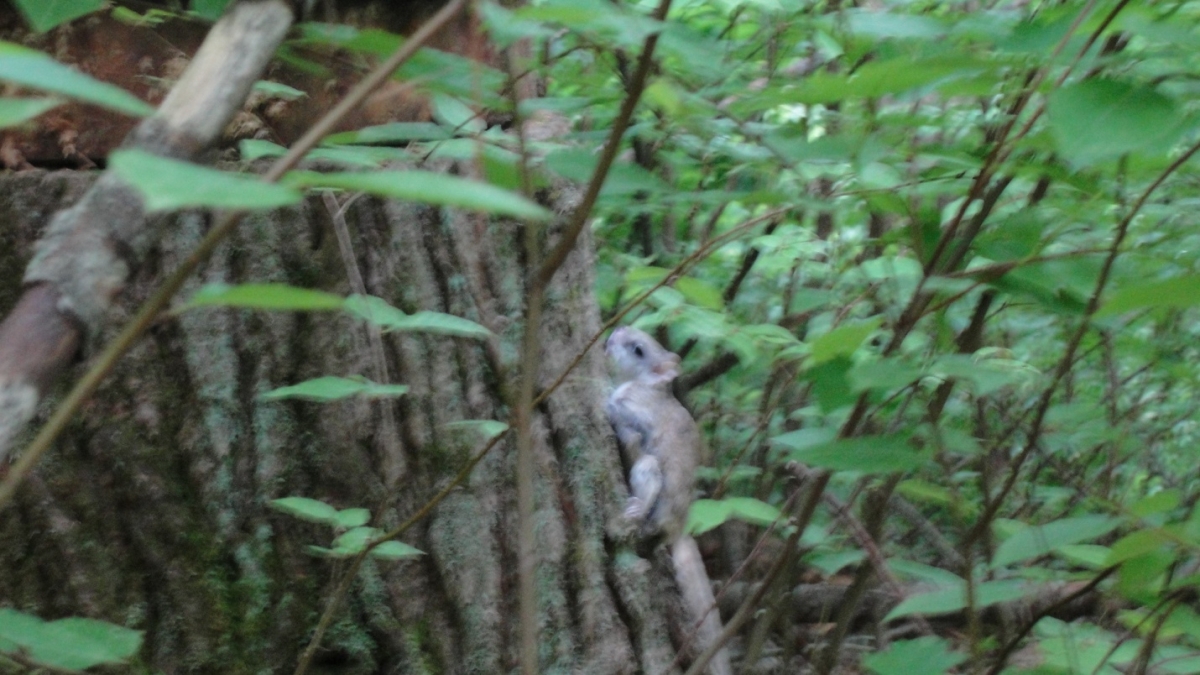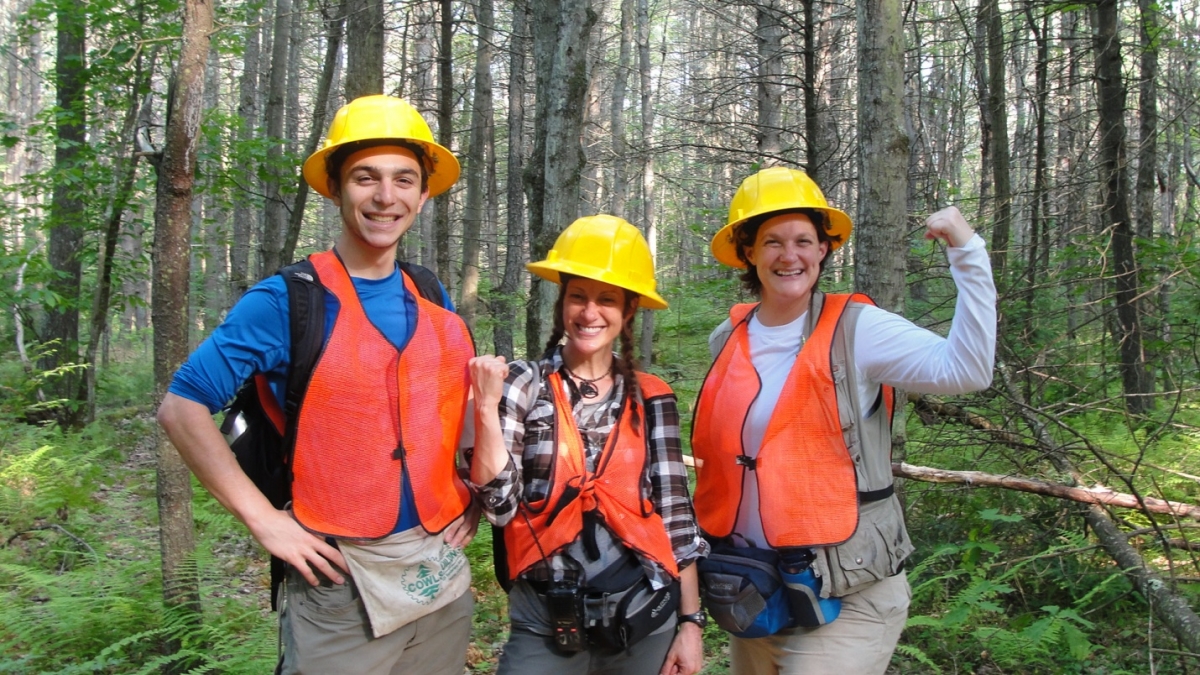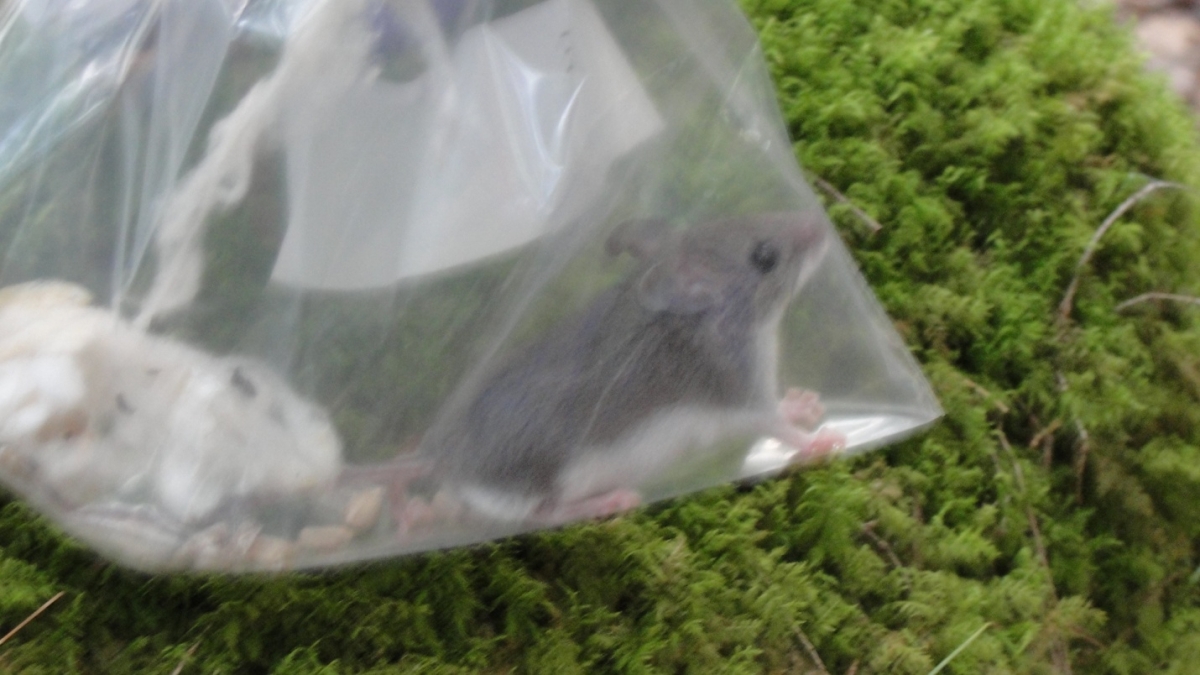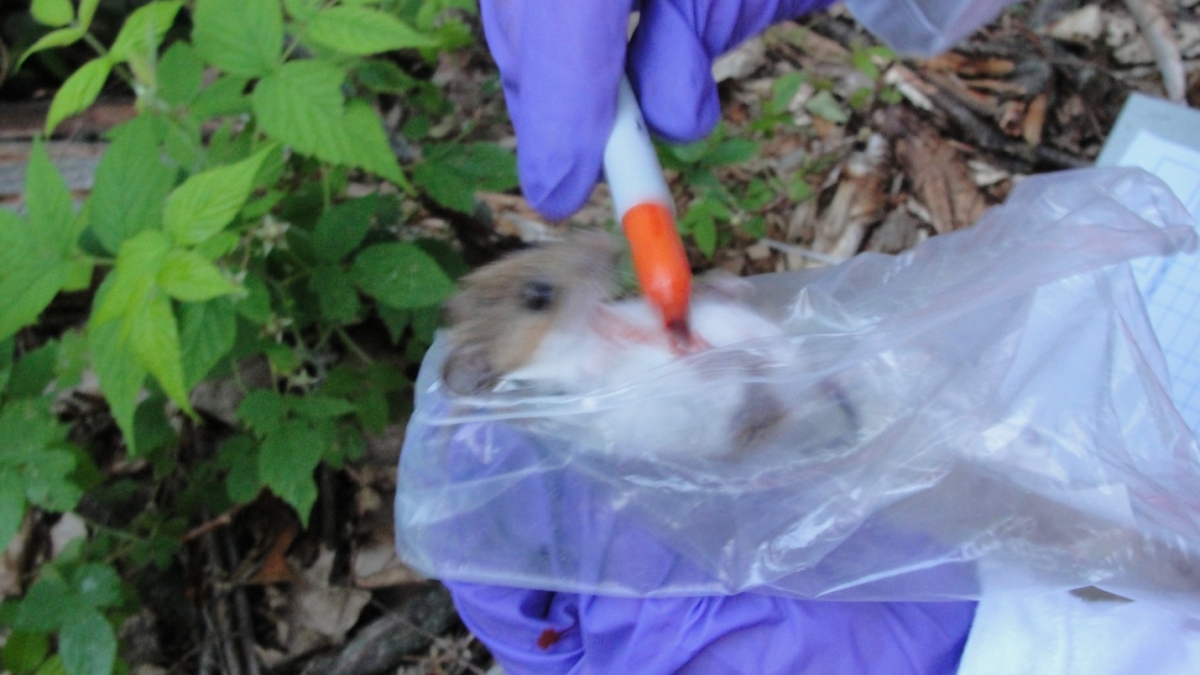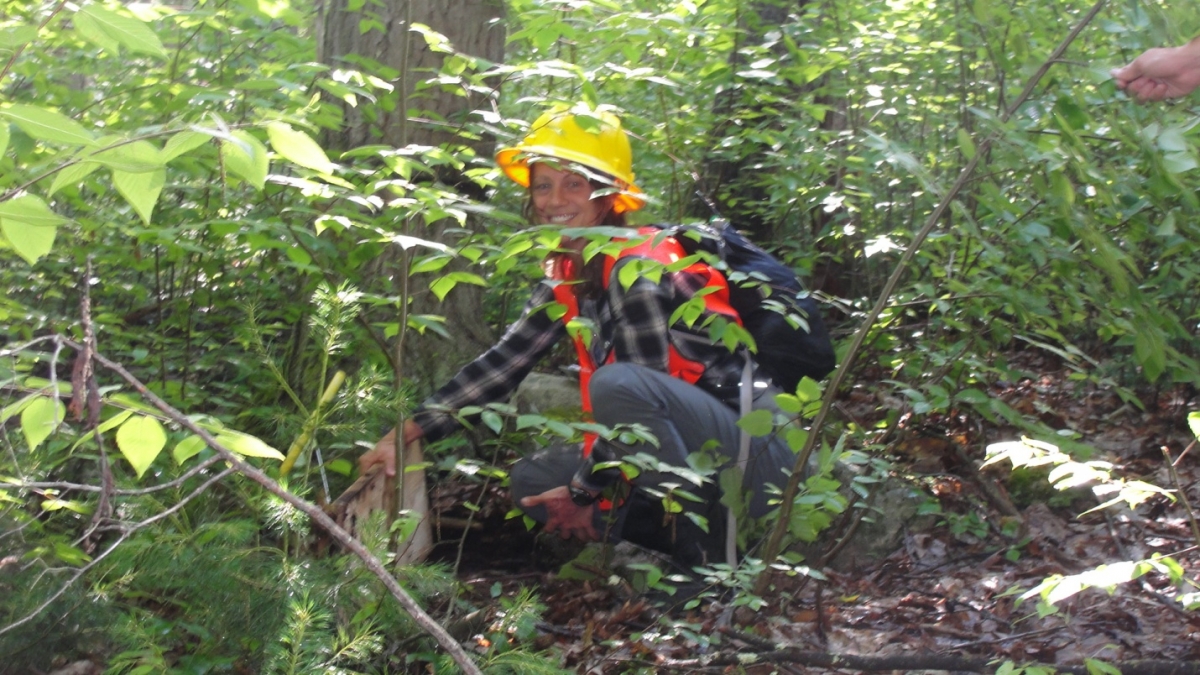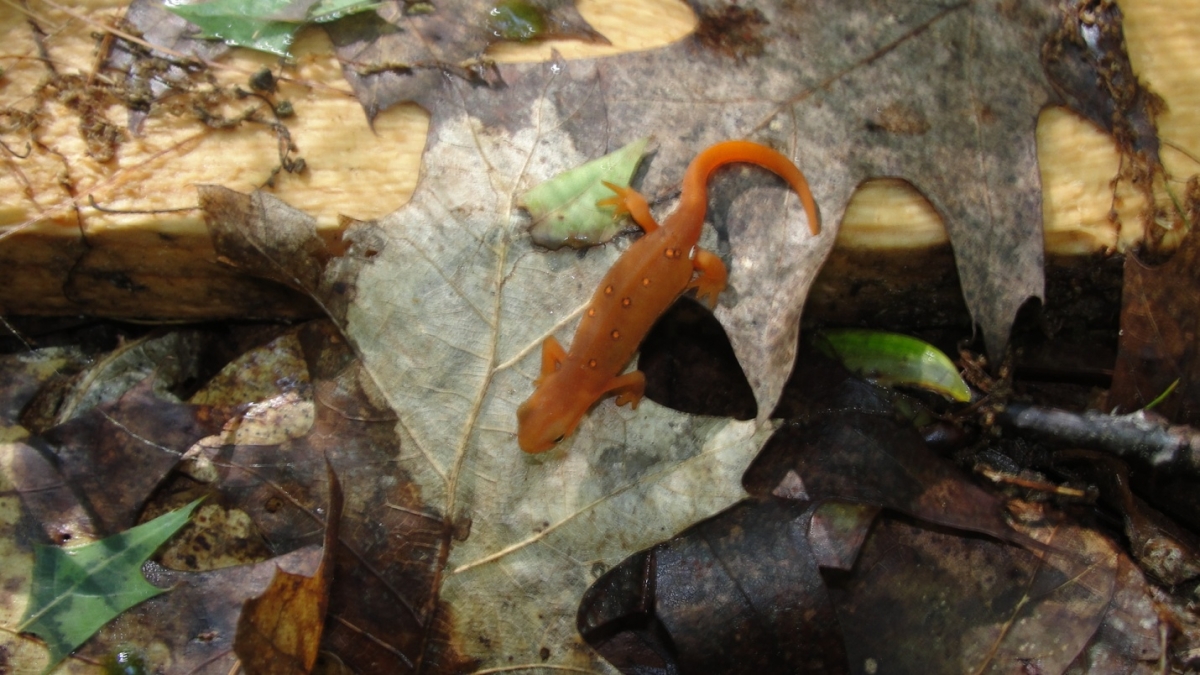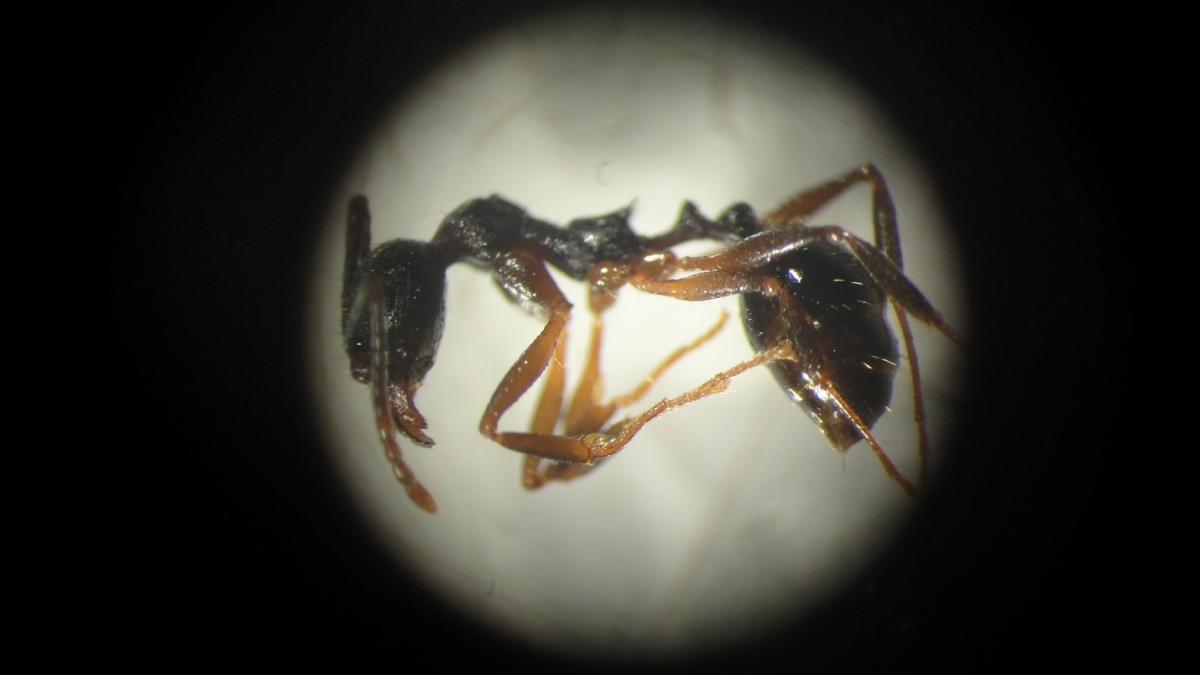You are here
The slugs are trap happy, but where are the rodents?
The past few weeks have had one thing in common: line after line of empty traps. This summer, I'm studying rodents and other small mammals to find out what happens to them when eastern hemlock forests die off due to an invasive insect called the hemlock woolly adelgid. To determine which species are present and estimate their population sizes, fellow REU student James and I have been heading out to the forest in the evenings to set traps for them. The traps are Sherman live traps, which we bait with sunflower seeds and organic cotton wool.
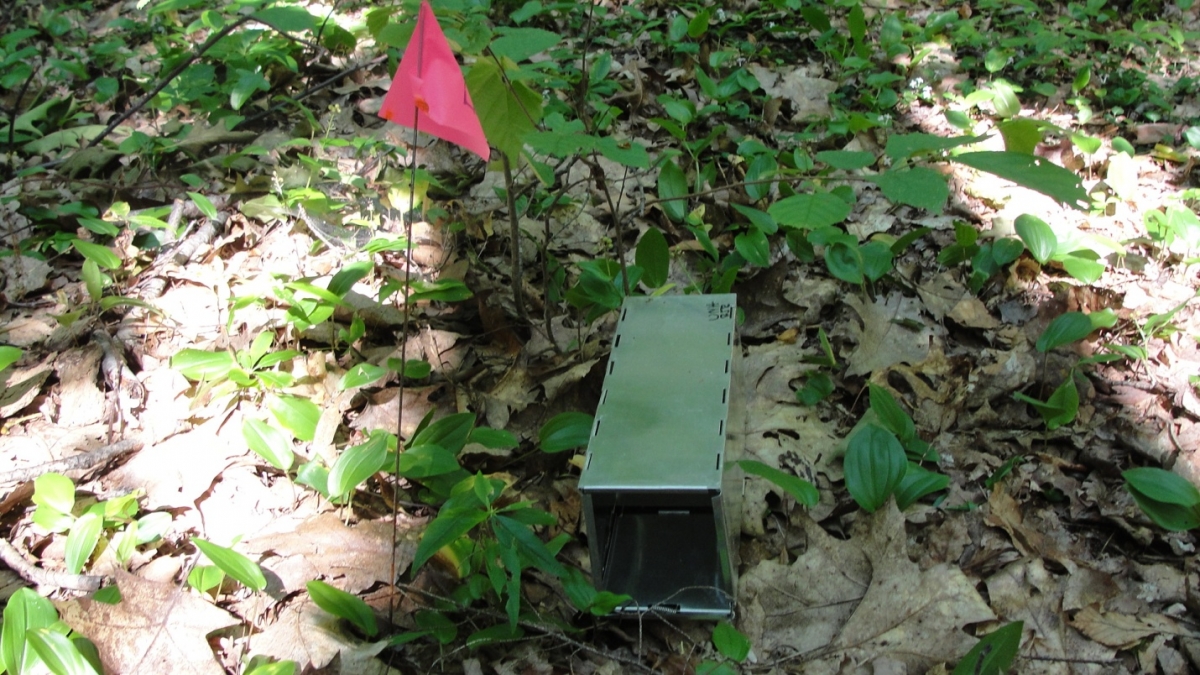 The next morning, our mentor Ally picks us up at 4:00 to check the traps for captures so we can quickly mark and release the animals. For the first few weeks of our project, we've opened the traps at sunrise and been greeted not by mice, voles, or flying squirrels, but slugs, snails, beetles, spiders, and hordes of seed-dispersing ants trying to haul away the mother lode of sunflower seeds still left inside. The slugs cling to the walls of the traps, leaving their slime trails behind as we remove them one by one. Last year at this time there were dozens of rodents in the traps. After several weeks of coming up empty-handed, we begin to wonder what on earth is going on. Could it be the weather? An increase in predators, parasites, or diseases? A decrease in food availability? An increase in competition? We really had no idea, so we started combing the scientific literature for clues.
The next morning, our mentor Ally picks us up at 4:00 to check the traps for captures so we can quickly mark and release the animals. For the first few weeks of our project, we've opened the traps at sunrise and been greeted not by mice, voles, or flying squirrels, but slugs, snails, beetles, spiders, and hordes of seed-dispersing ants trying to haul away the mother lode of sunflower seeds still left inside. The slugs cling to the walls of the traps, leaving their slime trails behind as we remove them one by one. Last year at this time there were dozens of rodents in the traps. After several weeks of coming up empty-handed, we begin to wonder what on earth is going on. Could it be the weather? An increase in predators, parasites, or diseases? A decrease in food availability? An increase in competition? We really had no idea, so we started combing the scientific literature for clues.
In some forests, rodent populations cycle with natural fluctuations in tree seed production. Trees like oak, maple, beech, and white pine are mast seeding species, which means they produce huge numbers of seeds in some years and hardly any in other years. In years with a big acorn mast, for example, rodents like squirrels produce a lot of offspring, and their populations explode. But it's only temporary -- after a couple of years of low seed production, their populations decline again, and the cycle repeats itself. Red-backed voles and white-footed mice have been observed to cycle in similar ways in response to eastern white pine seed production. So now we're looking at seed rain data as well as rodent capture data to see if we can figure out whether this summer's low rodent numbers might be associated in some way with low tree seed production.
Over the past week or so, things have started to pick up a bit. Saturday morning, we were greeted by this southern flying squirrel in one of our traps:
As soon as we released her, she scrambled up to the top of the tree and leaped off one of its branches, and we watched her glide through the forest canopy. It's moments like these that make getting up before dawn worthwhile!
Each rodent we capture is weighed and its sex, age class, and reproductive status is recorded. Then we either PIT-tag it or mark it on its underbelly with a permanent marker before we release it. That way, we know if an animal has been captured for the first time, or if it's a recapture. The number of recaptures can be used to estimate the population size for each species.
Last week, James and I also had the chance to help Ahmed, a PhD student at UMass Amherst, with one of his salamander surveys.
Ahmed is comparing different methods for determining salamander abundance and diversity to see which is most effective. One of the methods involves placing cover boards along several transects and then periodically checking under the cover boards for salamanders. One of the highlights for me was this spotted salamander:
We also saw some red-backed salamanders and this juvenile red-spotted newt, also known as a red eft:
Last, but not least, I've been learning how to identify ants. Ants are incredibly important in forests. Some species disperse the seeds of wildflowers like trillium and bloodroot. The seeds of these plants have fatty structures called elaiosomes, which ants love. The ants carry the seeds back to their nests so they can feed the elaiosomes to their larvae, and in doing so, they plant the seeds.
I never fully appreciated how beautiful ants are until the first time I saw one under a dissecting microscope. Some ants have intricate sculpturing on their bodies, while others have sharp spines or tiny golden hairs. Still others can be identified by how many segments their antennae have, and whether they're all the same color or not. Each one is like a little puzzle to solve, and the more time I spend with them, the more I want to learn about them.

Quirky Q & A with Amy
1. What nocturnal animal would you be if you had to choose and why?
I'd be a river otter -- mostly nocturnal, but sometimes out during the day. River otters spend a lot of time fishing and playing, which sounds like a great life to me. I'd definitely want to live somewhere with lots of snow so I could perfect my belly flop.
2. If you could be a superhero, which special power would you choose to have?
I'd be able to bring back endangered species with a wave of my hand, and maybe a few recently extinct ones too, like the ivory-billed woodpecker. If I could have two superpowers, I'd also like to be able to fly to anywhere in the universe to see if there is life on other planets.
3. If you had a chance to go back in time for 24 hours, where and when would you go?
I'd like to see what North America looked like before the Europeans arrived. I might even go back to the Pleistocene so I can see a woolly mammoth.
4. What object would you like to be able to draw really well?
I'd love to be able to draw plants, especially wildflowers. Unfortunately, I can't draw my way out of a paper bag. I'm hoping that changes somewhat with the upcoming nature sketching workshop!
5. What's your favorite comfort food?
There's a Vietnamese restaurant near where I go to school that makes this delicious seafood soup with holy basil, cilantro, and hot chiles.
6. What TV shows are your favorites?
PBS shows like Fabric of the Cosmos and NOVA ScienceNOW.

